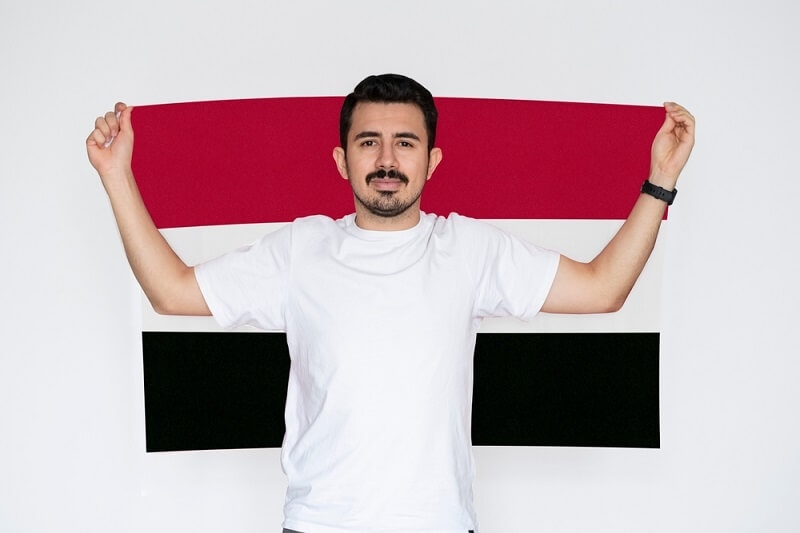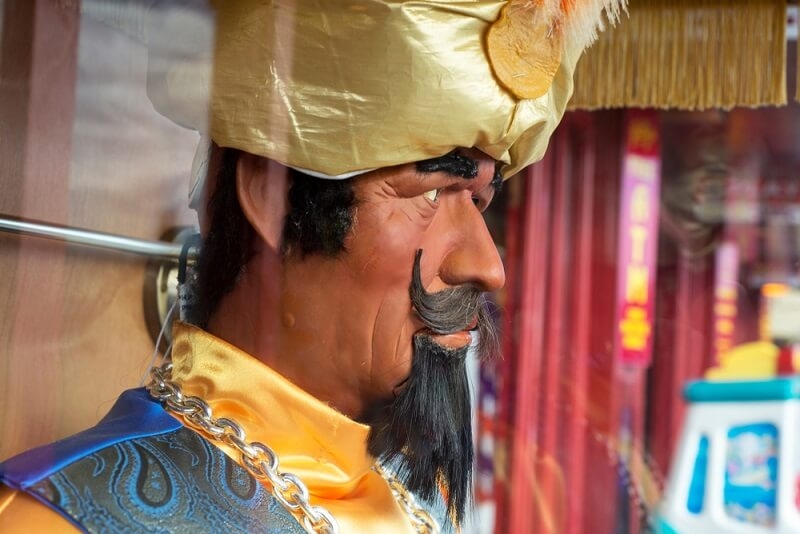
Ancient Egypt, a civilization known for its grandeur, elaborate customs, and intricate symbols, held facial hair in significant regard. While the common perception of Egyptian grooming practices leans toward a preference for smooth, clean-shaven faces, moustaches and other forms of facial hair played a critical role in the representation of power, social status, and divine association. The presence of facial hair, particularly among pharaohs and other elite individuals, reflected authority, wisdom, and a connection to the gods. This article explores the importance of moustaches in Ancient Egypt, shedding light on their symbolism, grooming practices, and their role in shaping identity.
Grooming practices in Egypt attained a high level of sophistication, with cleanliness and good personal hygiene being given paramount importance. In this warm and dry climate, one had to take extreme care of oneself; men and women alike indulged in hair removal. Egyptians considered it unhygienic to have more than a minimum of body hair and associated excessive hairiness with uncivilized behavior. Hence, razors, depilatory creams, and pumice stones became popular means of hair removal.
Yet, no one can tell that facial hair was really abhorred amongst the Egyptians; moustaches never disappeared altogether. While very much a royal prerogative, moustaches occasionally made their appearance among nobles, warriors, and possibly some pharaohs. Well-kept moustaches came to symbolize individuality and might; it distinguished some men in a culture that revered hairlessness.
In ancient Egypt, every aspect of existence was imbued with symbolic representations, whether in textiles, jewellery, divine imagery, or physical aspects. The moustache was not as common as the glorious false beard upon which every pharaoh apparently depended but carried enough meaning of its own. An apparent moustache could denote mature manhood, wisdom, and might of the warrior.
The Egyptian upper class, especially military leaders, kept their moustache in neat condition as a reflection of their sense of masculinity and gallantry, especially at certain times when external influences such as Hyksos rule (1650-1550 before Christ) caused the introduction of a radically new trend of grooming. Those warriors were feared to be fierce and commanding epitomes of masculinity by sporting a moustache or any other kind of facial hair.
Discussing the facial hair of pharaohs means distinguishing between the natural hair and the false beard, the so-called osird. Pharaohs, including females like Hatshepsut, were often wearers of this artificial beard, a divine mark that joined them to Osiris, the god of the underworld. Plaited or in metal, false beards were worn solely in rituals and official portraits.
There were pharaohs whose faces bore natural facial hairs under which one could see moustaches. Some of the Middle Kingdom and New Kingdom rulers were portrayed on art and carvings with slight moustaches, showing the faint themes of masculinity and leadership changing. These point out to the fact that although a general clean-shaven look was most apparent, moustaches were sometimes personal or stylistic selections in Egyptian royalty.
Throughout its history, Ancient Egypt interacted with various neighboring civilizations, from Nubians to Persians to Greeks and finally to Romans. Such interactions encouraged the exchange of cultures and trends in clothing and grooming. At times, foreigners did impose upon Egyptian taste, such as the way of wearing facial hair.
While Late Period men (664-332 BCE) were preceded by their customary clean-shaven faces, some were tolerant of facial hair due to the more pronounced Persian influence. Persian rulers of Egypt allowed and even endorsed mustaches and beards as part of their royal accouterments. The rulers of Egypt during the Ptolemaic period also tended to grow facial hair, showing oblique signs of their culture being an influence on their customs.
Thus, the blending of styles showed that Egyptian grooming practices were not averse to foreign influences. Moustaches were rarely visible but represented the very essence of foreign influence and changes in identity.
Explore More: The Impact of Egyptian Culture on Modern Kids’ Hairstyles
In their own rights, elite individuals and pharaohs were trendsetters, while the common Egyptian would have his own beauty and grooming practices. Most men of this time were clean shaven, yet in certain social classes, moustaches could be counted; laborers and older men would be those classes. Without the proper tools for grooming available to the nobility, their more natural look would be understandable.
In some instances, moustaches symbolized wisdom and experience on the part of elders. Tomb paintings show some artisans, scribes, and traders with faint moustaches, indicating that facial hair could never be completely ignored in mundane life.

Religious beliefs significantly determined grooming attitudes in Ancient Egypt. The hairstyles and facial hair of often-gods in their divine attributes have been depicted. Thus, Osiris was commonly depicted with a false beard, whereas particular deities like Ptah and Bes have shown the difference with their own styles of facial hair.
Commonly, the god known as Bes, whose attributes include household, fertility, and even childbirth, appeared with a complete beard and a south-western moustache. Where a rugged almost ludicrous appearance warded the evil spirits and brought good fortune. It was this very information that brought out the fact that though in general, the Egyptian elite avoided facial hair, the divine imagery provided a loophole.
This unsettled progression of Egyptian culture really underwent numerous changes yet remained strong with its association with false beards under royalty for that public even though such representation was rare for the presence of facial hair, which nowadays included moustaches.
Roman influences not only brought in changes in other aspects of the Egyptian way of life in 30 BCE when Egypt was made a Roman province but also proved to be true in hairstyles. Clean-shaven faces were almost a must for all Romans, hence propounding the existing Egyptian tradition of smooth skin. By this time, facial hair was losing its inherent meaning as far as Egyptian culture was concerned.
Also Read: Egyptian Hairstyles for Men: Trends & Traditions in History
The significance of moustaches in Ancient Egypt was subtle but not absent. While smooth, hairless skin was the prevailing standard, facial hair—especially moustaches—occasionally found its place in the representation of masculinity, power, and identity. Pharaohs' appearance was largely dictated by divine symbolism, leading to the widespread use of artificial beards, but some rulers and military figures chose to maintain moustaches as a personal expression of strength.
Egyptian facial hair practices evolved over time, influenced by foreign interactions and shifting social norms. Moustaches, although not as iconic as the false beard, served as a minor yet notable element in the broader spectrum of Ancient Egyptian symbolism and grooming traditions. By examining these nuances, we gain a deeper understanding of how identity and power were visually represented in one of history’s most fascinating civilizations.
This content was created by AI